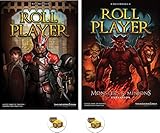Player Aid Cards

Each player receives a Player Aid card that includes a summary of the sequence of play on the front.
The back is used for scoring Reputation Stars at the end of the game.
Class Cards
Each player receives one Class card, defining their character 's adventuring profession. The Class card has two options for the player to choose from, one on each side. Each Class has its own unique Attribute Goals and Class- specific special ability.
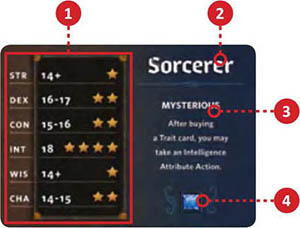
1 Attribute Goals
Defines the desired score for each Attribute and shows how many Reputation Stars the player will receive at the end of the game for reaching each Attribute Goal.
2 Class Title
3 Class Ability
Each Class provides a unique power available to the player.
4 Class Color
Shows which color dice will provide Reputation Stars at the end of the game.
Backstory Cards
Each player receives a Backstory card for their character that describes the character's pre-adventuring history and provides an opportunity to earn Reputation Stars at the end of the game.
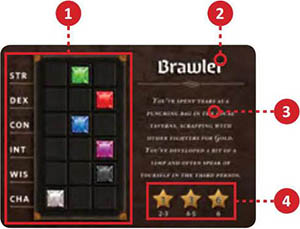
1 Attribute Grid
Shows the 18 possible spaces across the six Attribute Rows.
Six spaces in the grid show dice of specific colors.
2 Backstory Title
3 Backstory
4 Reputation Star Reward
At the end of the game, players earn Reputation Stars for matching the dice colors in the Attribute Rows of their Character Sheet to the dice colors and positions shown on their Backstory card.
The numbers below the stars on the Backstory card indicate how many matching colors are needed to earn the number of Reputation Stars shown inside the star. For example, if the player has four matching dice at the end of the game, they will earn three Reputation Stars.
Alignment Cards
Each player receives an Alignment card to track their character 's shifting moral perspective. At the end of the game, players gain or lose Reputation Stars based on the position of a tracking token on the Alignment card.
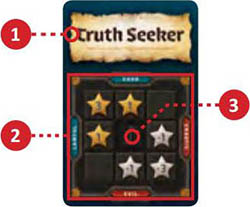
1 Alignment Title
2 Alignment Grid
Shows the nine possible positions of the tracking token and the effect on Reputation as the character leans toward good or evil and toward lawful or chaotic.
3 Alignment Starting Position
All players begin the game with their tracking token in the center position.
Market Cards
Players buy Market cards throughout the game to enhance their character.
Weapon cards provide ongoing abilities or bonuses. Each Weapon card features an icon showing one or two hands (indicating the number of hands a character needs to wield the weapon). Players may never have more than two hands worth of Weapon cards at a time.
Armor cards come in three types: Chain, Leather, and Mystic. Armor cards do not have an effect during the game, but players may earn Reputation Stars for collecting them. Players may collect as many Armor cards as they wish, including multiple types of Armor.
Skill cards give a character a special ability to use during the game and, when used, adjust the character 's Alignment. Players may collect as many Skill cards as they wish.
Trait cards adjust a character 's Alignment when bought, and the player earns Reputation Stars if they meet the criteria on the card. Players may collect as many Trait cards as they wish.
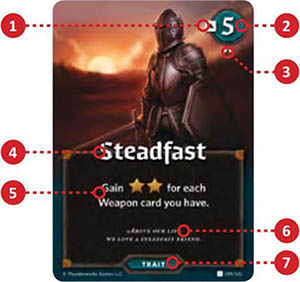
1 Arrow Icon
Moves the tracking token on the player 's Alignment card.
2 Cost
Amount of Gold required to purchase the card from the Market.
3 Setup Group
Used to configure the Market deck during game setup.
4 Card Title
5 Description
Describes the card's function in the game.
6 Flavor Text
7 Market Card Type
Indicates if a Market card is a Weapon, Armor, Trait, or Skill.
Initiative Cards
The five Initiative cards are used to coordinate the flow of gameplay. Dice and Gold are placed on Initiative cards at the beginning of each round. Players then take turns selecting an Initiative card. The number on the card dictates player order when it is time to purchase Market cards.
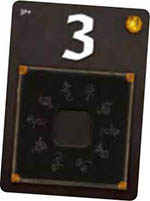
Continue Reading


